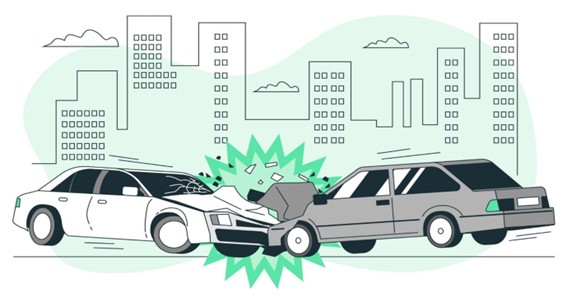Key Details to be Included in a Car Accident Reports.
Make a report right away if you are involved in an automobile accident. Even if you aren’t hurt right away, you might experience adverse bodily effects later on. Additionally, “hidden” car damage could manifest days or weeks after the collision.
When the police arrive on the scene, provide them all the information they need to make a strong case in court. In the above situations, hiring the best car accident lawyer is one of the best actions you can take to prove that the defendant was negligent. Skilled personal injury attorneys can dig deeper into the case and uncover enough evidence that will incriminate the defendant and lead to proper compensation for one’s damages.
Items to Be Included in a Car Accident Report
1. A Detailed Description of the Incident
When capturing a detailed description of the incident during the automobile collision, it is crucial to ask oneself the following questions. Was the driver making a very close turn to the curb? Did the driver and the passenger have their seatbelt on? All these details are crucial and need to be captured as much as they seem unimportant. They can be used as evidence in a court of law to help compensate one for the damages incurred.
One should avoid speculating or guessing anything in such situations and report what one can see or feel. If you are injured, let the polices or medical attendants on-site know so that injuries and damages can be recorded for future reference. Weather conditions at the time, state of the road, time, and speed of the vehicles involved in the crash are other crucial records to include in the accident report.
2. Statements by the Witness
It is of legal importance that someone involved in an accident captures witness accounts with details such as phone number and name. If possible, video recordings of witness testimonials can be taken to aid in seeking justice for the claimant. Those with less than 50% blame for causing the car accident can seek compensation for the damages. The latter is only applicable in states that use comparative negligence.
3. Images of the Accident Scene
Injured persons should take a snapshot of visible damages and injuries without influencing information/evidence already gathered by the police or state officials on site. Body bruises and scars that develop with time are to be captured digitally and included in the evidence already possessed by the police for future reference in a court of law.
4. Drivers and Police details
It is important to note that police officers might or might not tamper with the evidence collected, the insurance company might make decisions based on their interests, and the judges might make a ruling that might not favor you if the case makes it to the court. Ensure that details such as the name of the driver, address, make/type of the vehicle, and vehicle faults/defects are captured, to sum up enough evidence against the defendant.
Try your best to collect the officer’s details as much as possible while on-site, as it might be difficult to track them after they have left. Ask and note down their name and address or any other contact details that can be resourceful in reaching them in the future.
Conclusion
Each person needs to know and protect their rights when need be. In case of a road accident, affected individuals need to act quickly to document their injuries through the help of various specialists such as doctors and police. Medical and police reports are crucial documents that can provide evidence a good car accident lawyer can use in a court of law to seek compensation for an injured person.







